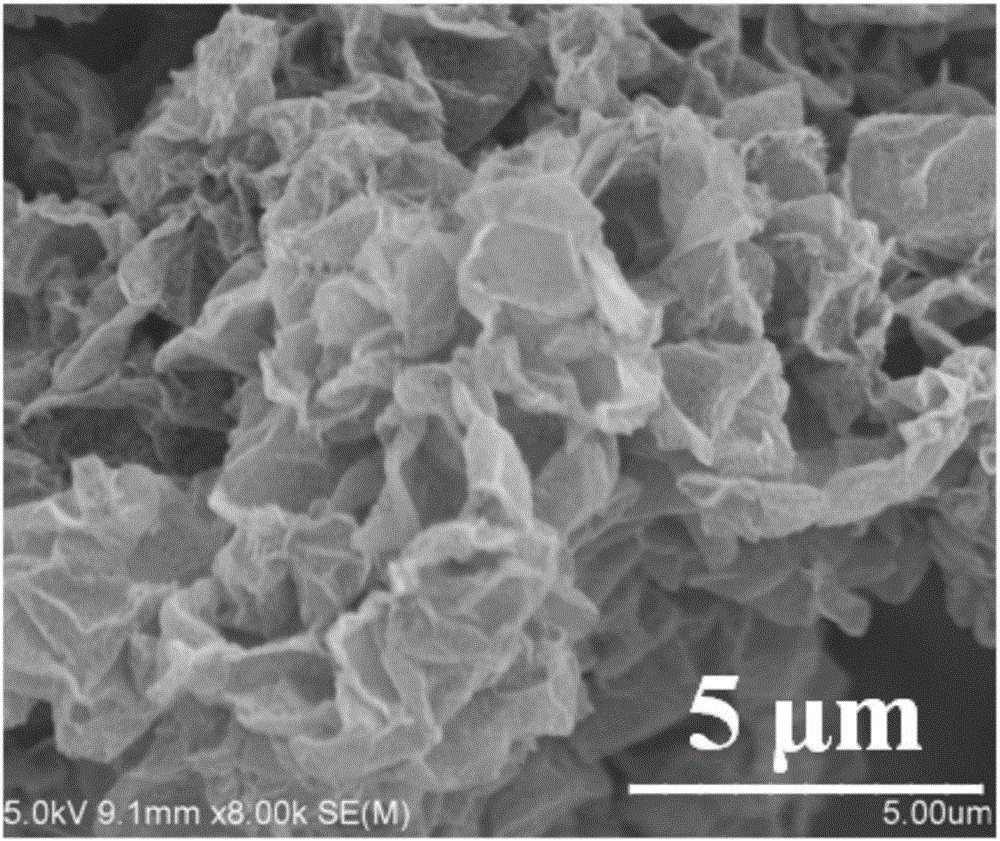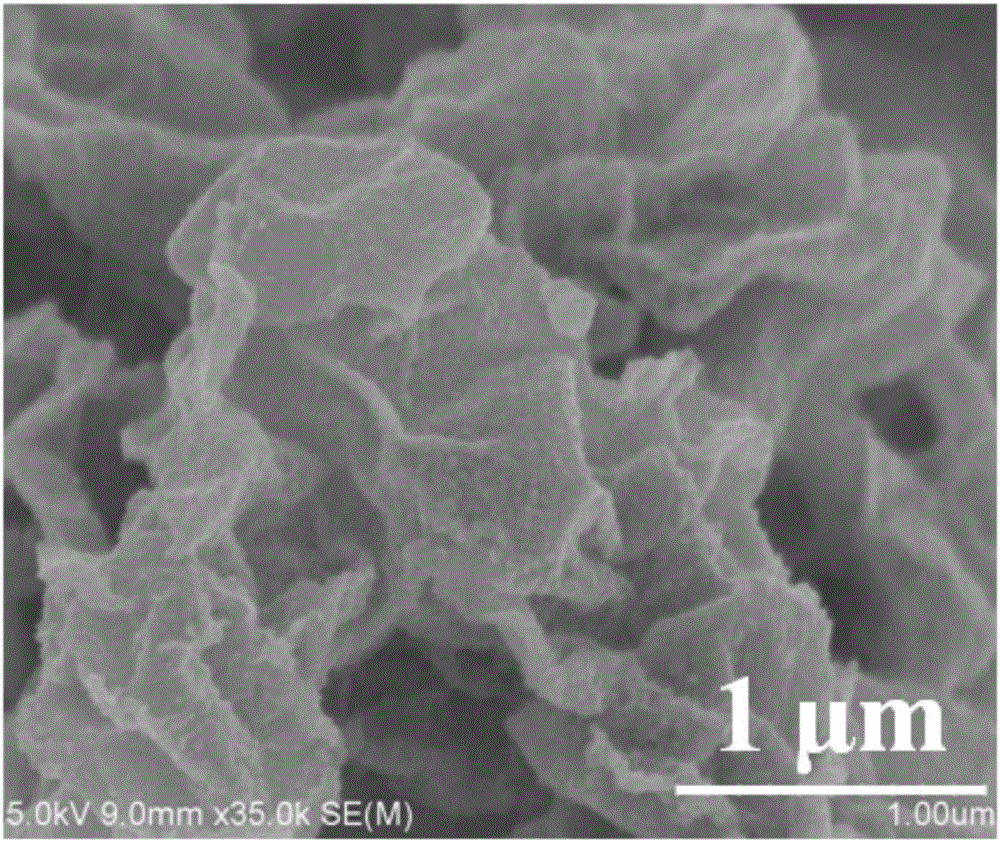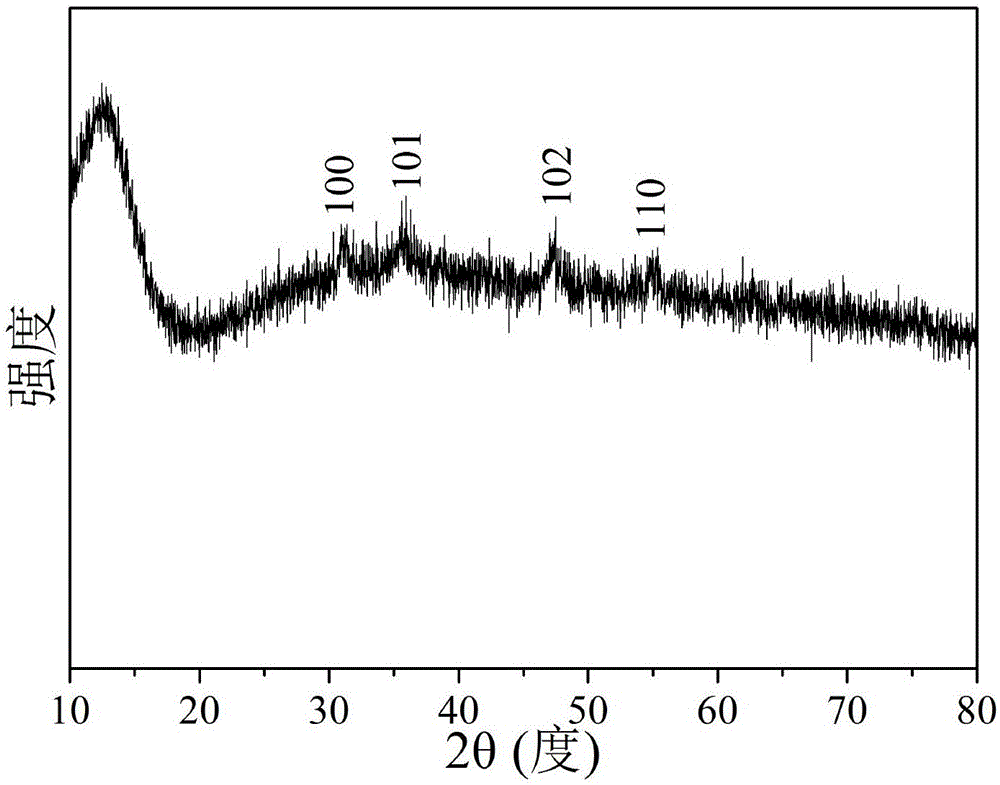Preparation method of cobalt sulfide/graphene nanocomposite material, negative electrode of lithium-ion battery and lithium-ion battery
A nanocomposite material and lithium-ion battery technology, applied in battery electrodes, nanotechnology, nanotechnology, etc., can solve the problems of lithium-ion battery performance degradation, graphene rate performance degradation, and affecting lithium ion transmission, etc., to achieve experimental equipment Low requirements, good cycle performance, easy storage effect
- Summary
- Abstract
- Description
- Claims
- Application Information
AI Technical Summary
Problems solved by technology
Method used
Image
Examples
Embodiment 1
[0037] Preparation of graphite oxide: weigh 5.0g graphite and 3.75g NaNO respectively 3 Put it into a 1L beaker, stir vigorously, slowly add 150mL of concentrated sulfuric acid, stir for 0.5 hours, then slowly add 20g of KMnO 4 , Added in 0.5 hours, and continued to stir for 20 hours, the viscosity of the reactant increased, and the stirring was stopped to obtain a paste-like purple-red substance. After standing for 5 days, slowly add 500mL deionized water and 30mL H 2 o 2 At this time, the color of the solution becomes more obvious bright yellow. After the solution is fully reacted, it is centrifuged and washed to obtain graphite oxide.
[0038] Hydrothermal process: Dissolve 70mg graphene oxide in 80mL deionized water, add 7mL concentrated sulfuric acid (ρ=1.84g / cm 3 ), ultrasonically dispersed for 2 hours, and then the solution was transferred to a reactor, and reacted at a constant temperature of 160 ° C for 24 hours to obtain three-dimensional columnar reduced graphene...
Embodiment 2
[0041] The preparation method of graphite oxide is with embodiment 1.
[0042] Hydrothermal process: Dissolve 100mg graphene oxide in 80mL deionized water, add 8mL concentrated sulfuric acid (ρ=1.84g / cm 3 ), ultrasonically dispersed for 3 hours, and then the solution was transferred to a reaction kettle, and reacted at a constant temperature of 210 ° C for 20 hours to obtain three-dimensional columnar reduced graphene oxide, which was washed and collected.
[0043] Composite process: 0.5g cobalt nitrate, 0.4g L-cysteine, and 0.6g urea are dissolved in a mixed solvent (4mL water and 12mL DMF), and 20mg three-dimensional columnar reduced graphene oxide is added to the above mixed solution, Soak at 15°C for 1 day, then transfer it to a reactor, react at a constant temperature of 210°C for 30 hours, wash the product, dry it in vacuum at 40°C for 8 hours, and collect cobalt sulfide / graphene nanocomposites.
Embodiment 3
[0045] The preparation method of graphite oxide is with embodiment 1.
[0046] Hydrothermal process: Dissolve 90mg graphene oxide in 80mL deionized water, add 9mL concentrated sulfuric acid (ρ=1.84g / cm 3 ), ultrasonically dispersed for 4 hours, then moved the solution into a reaction kettle, and reacted at a constant temperature of 260°C for 20 hours to obtain a three-dimensional columnar reduced graphene oxide, which was washed and collected.
[0047] Composite process: 0.45g cobalt chloride, 0.30g thioacetamide, and 0.30g urea are dissolved in a mixed solvent (8mL water and 8mL DMF), and 18mg three-dimensional columnar reduced graphene oxide is added to the above mixed solution, 30 ℃ for 3 days, then transferred to a reaction kettle, reacted at a constant temperature of 180 ℃ for 22 hours, washed the product, dried in vacuum at 70 ℃ for 5 hours, and collected cobalt sulfide / graphene nanocomposites.
PUM
| Property | Measurement | Unit |
|---|---|---|
| Concentration | aaaaa | aaaaa |
| Concentration | aaaaa | aaaaa |
Abstract
Description
Claims
Application Information
 Login to View More
Login to View More - R&D
- Intellectual Property
- Life Sciences
- Materials
- Tech Scout
- Unparalleled Data Quality
- Higher Quality Content
- 60% Fewer Hallucinations
Browse by: Latest US Patents, China's latest patents, Technical Efficacy Thesaurus, Application Domain, Technology Topic, Popular Technical Reports.
© 2025 PatSnap. All rights reserved.Legal|Privacy policy|Modern Slavery Act Transparency Statement|Sitemap|About US| Contact US: help@patsnap.com



